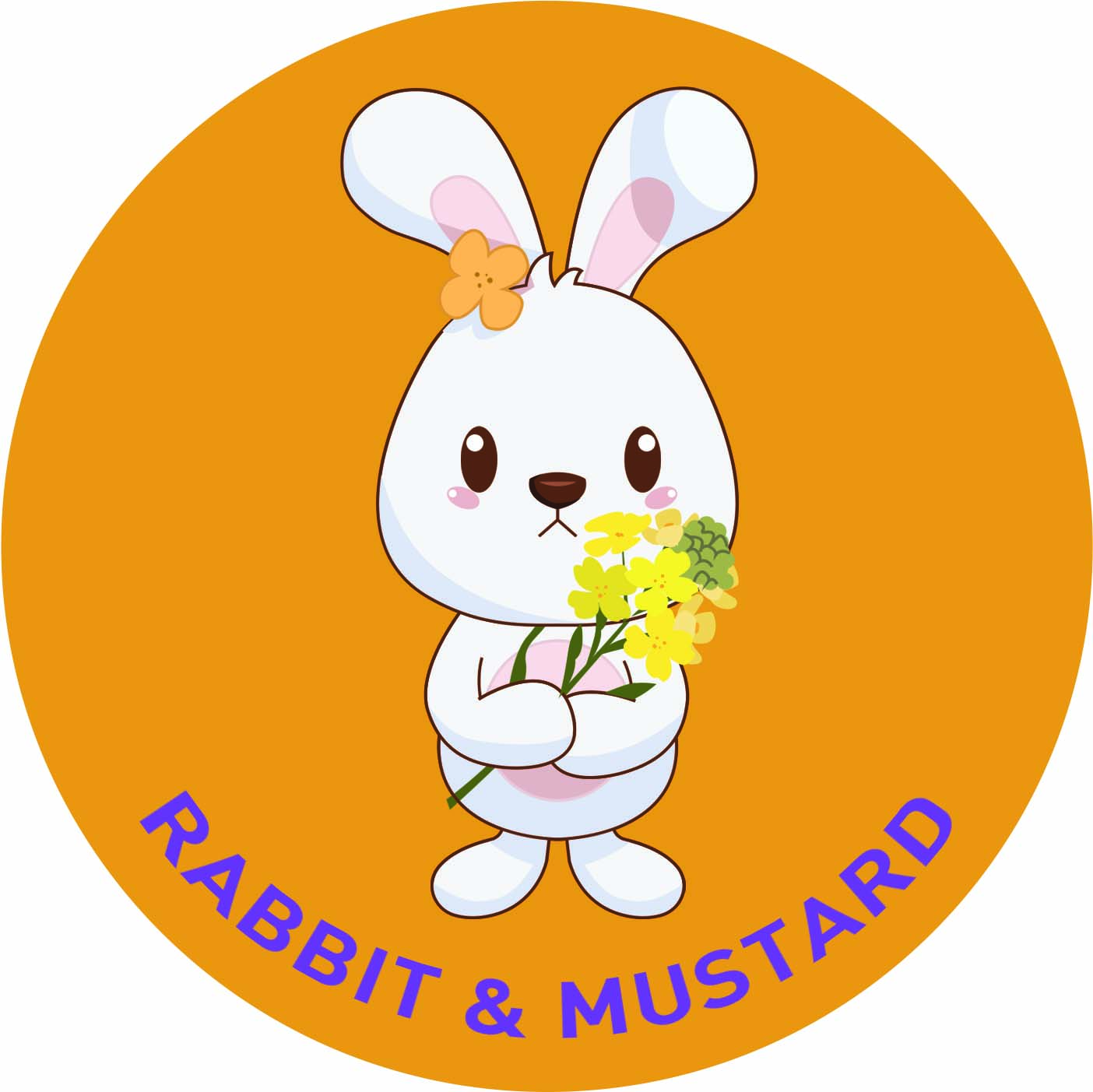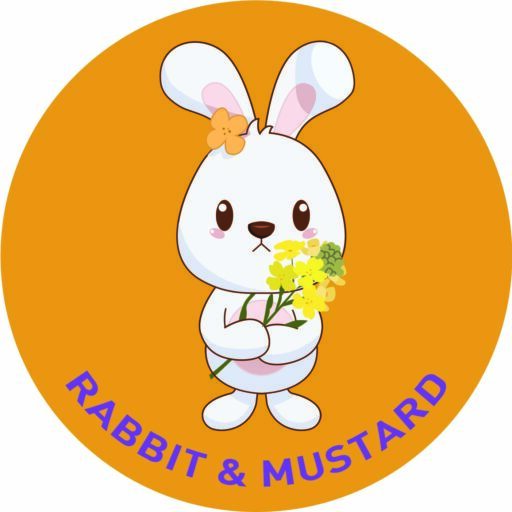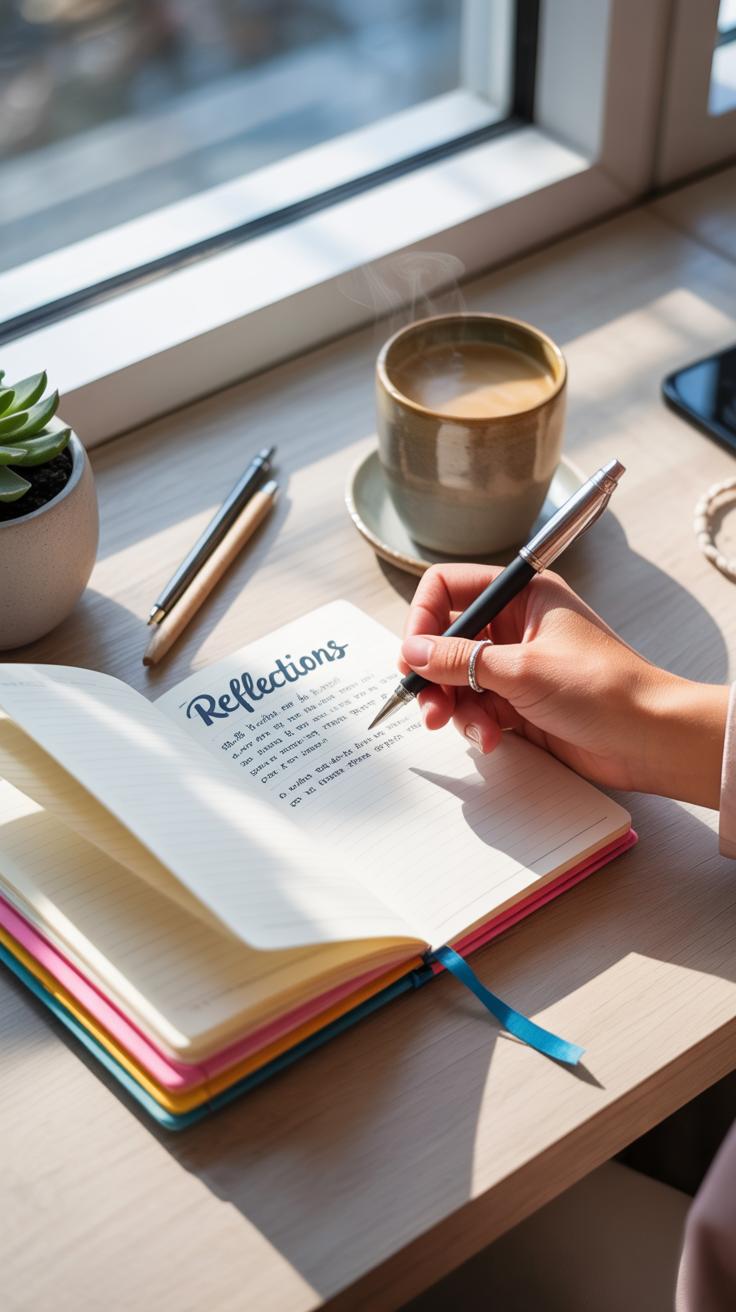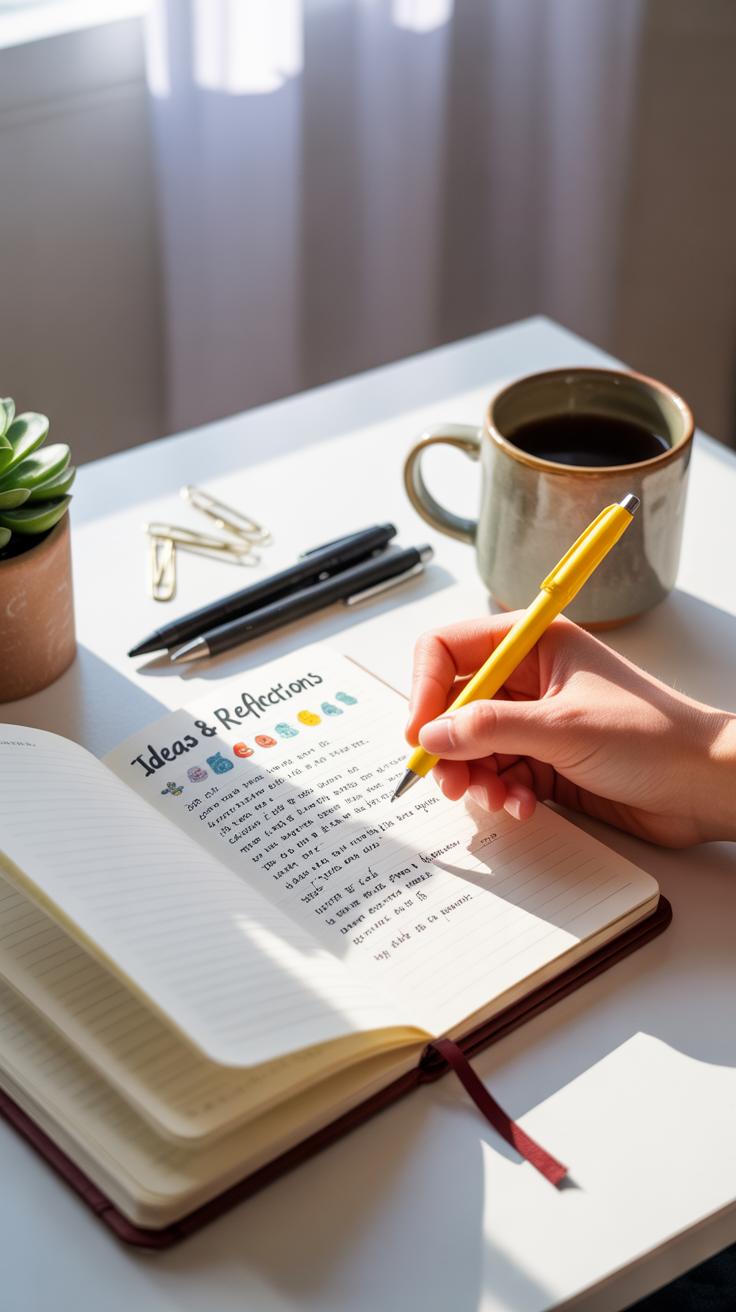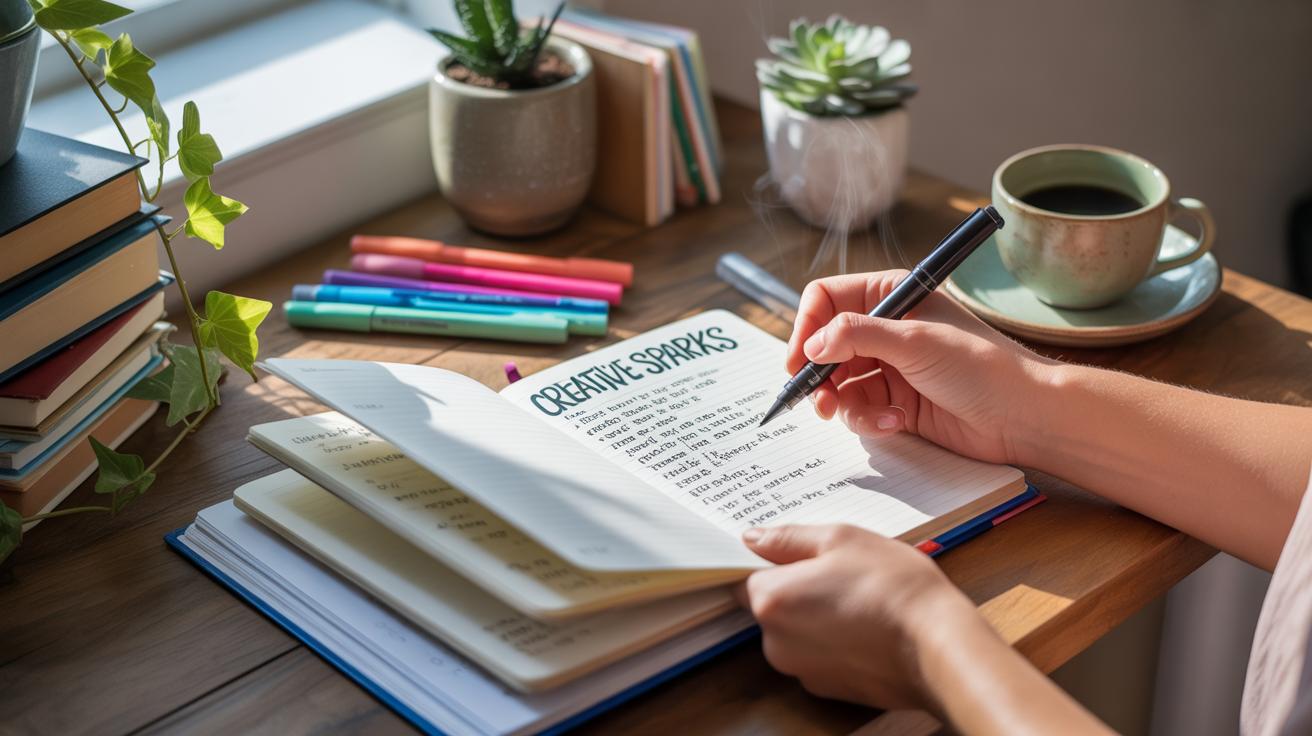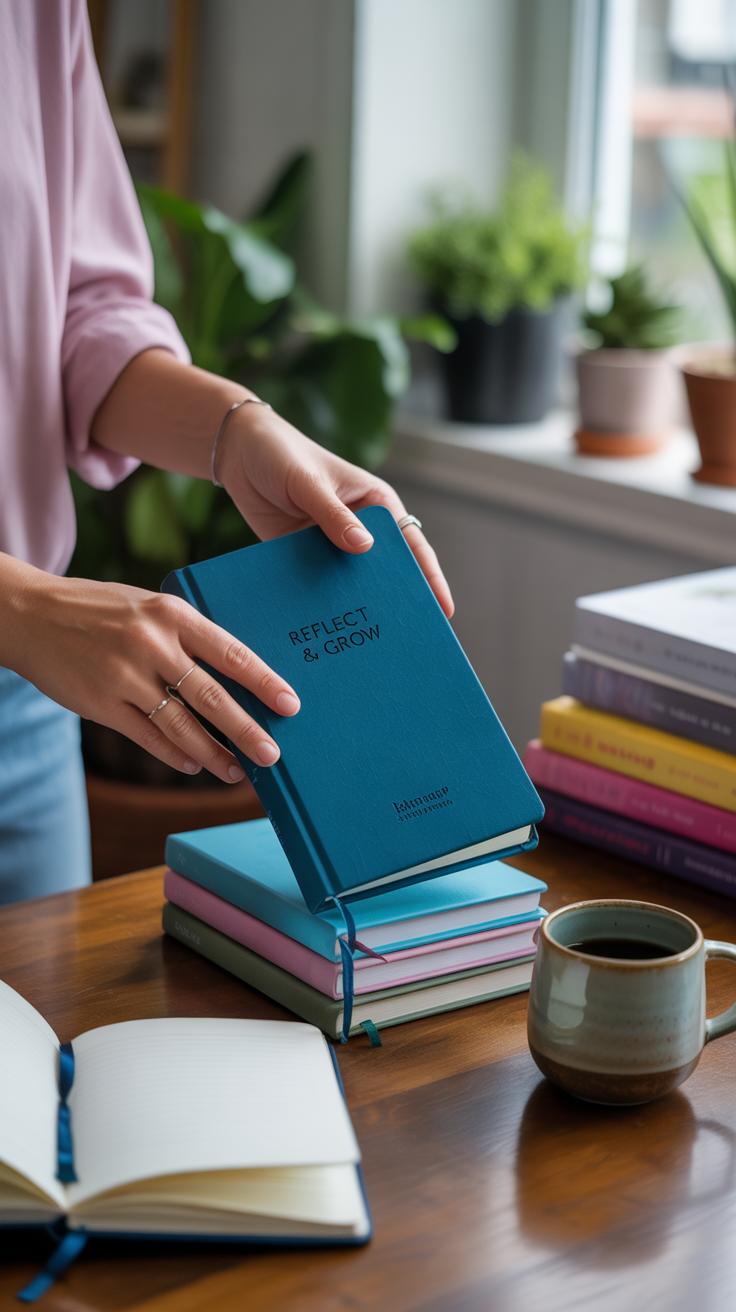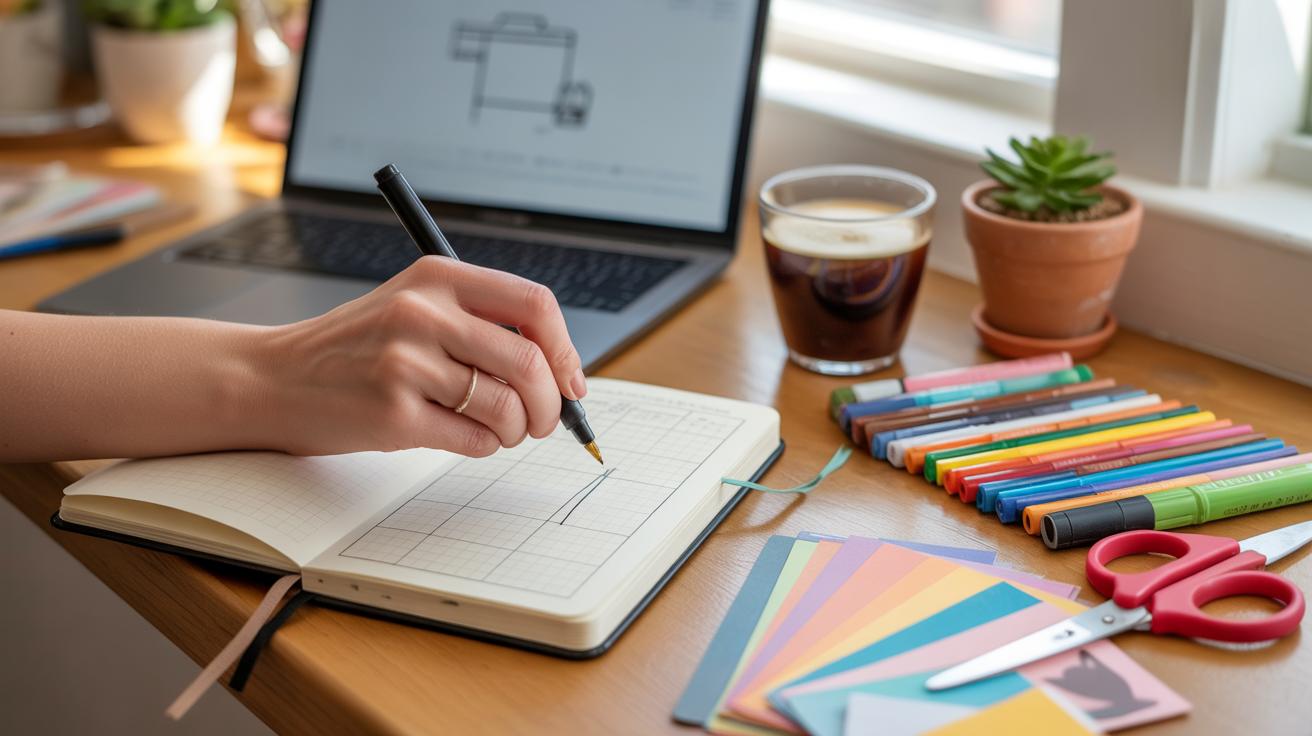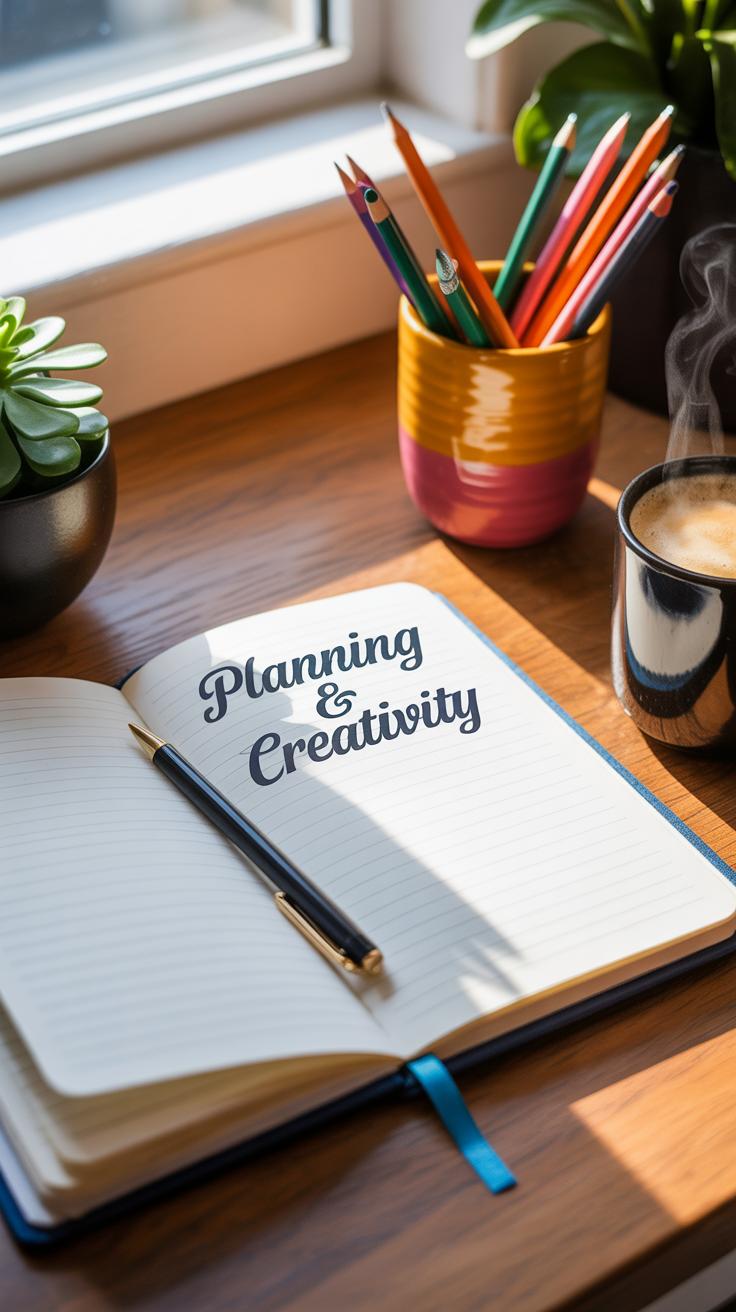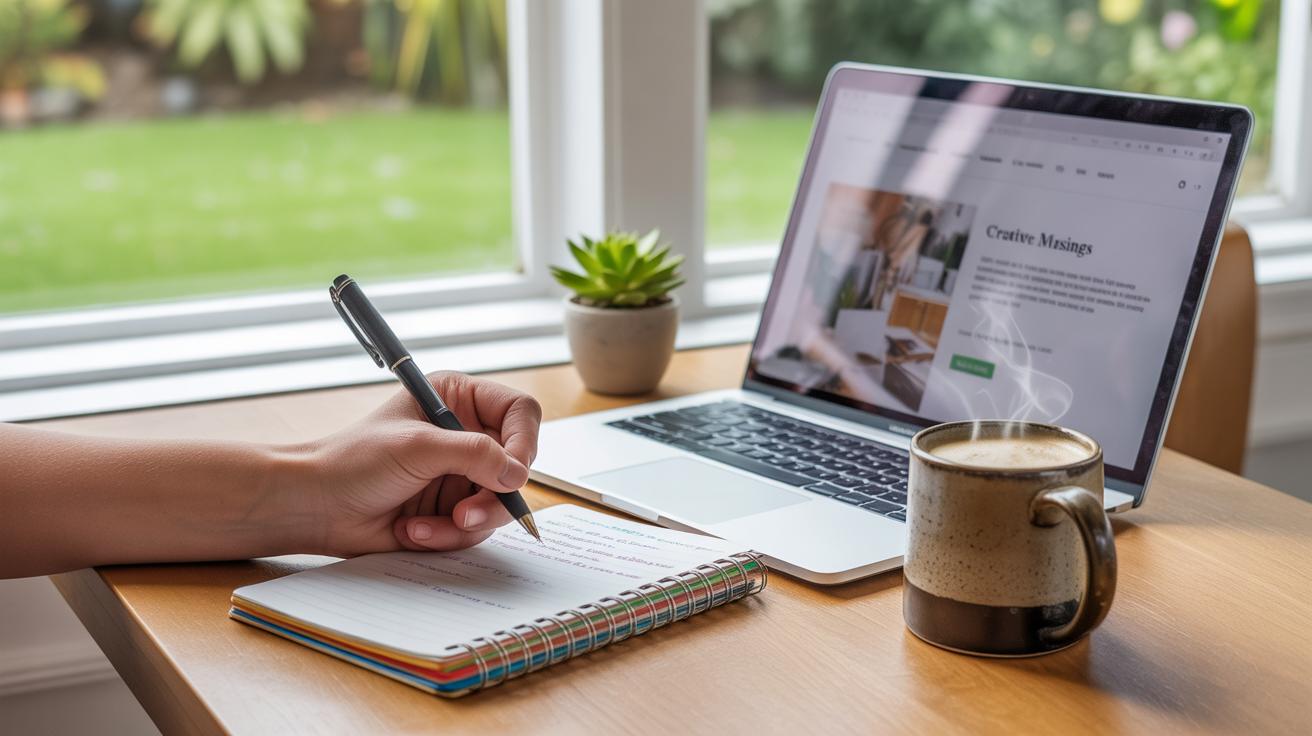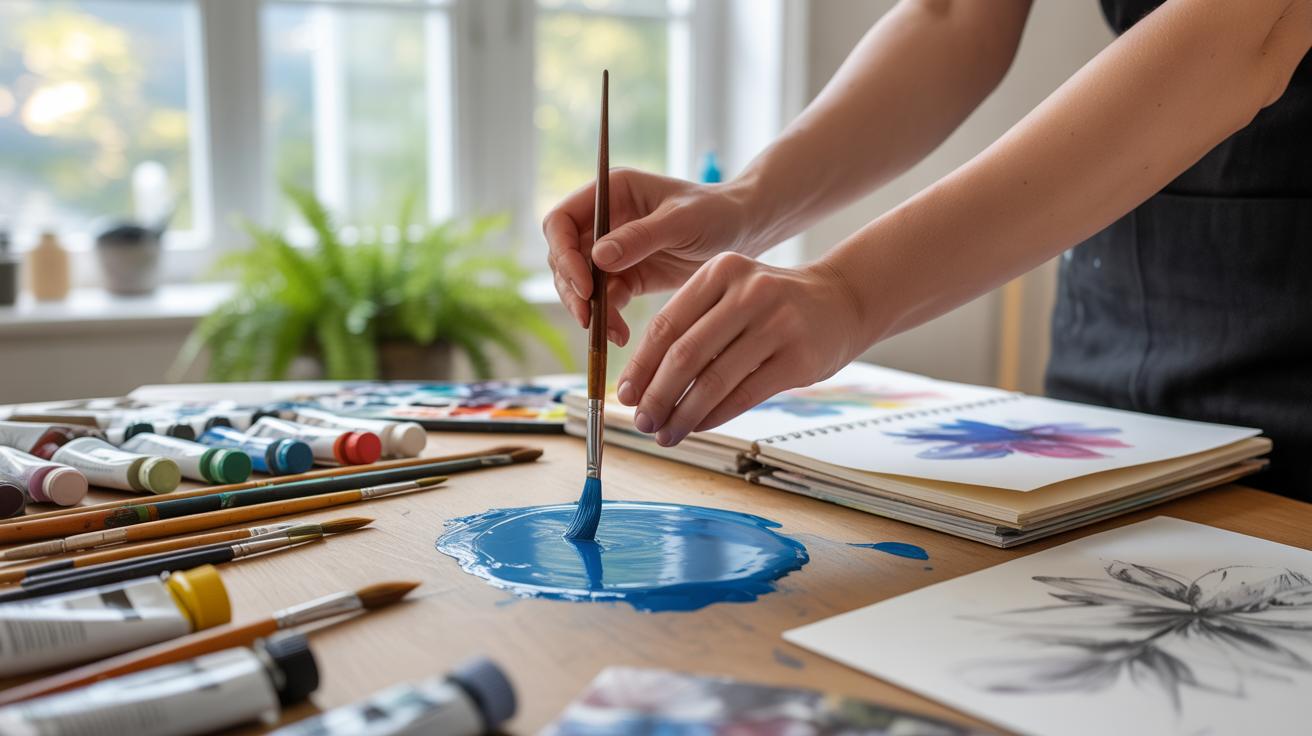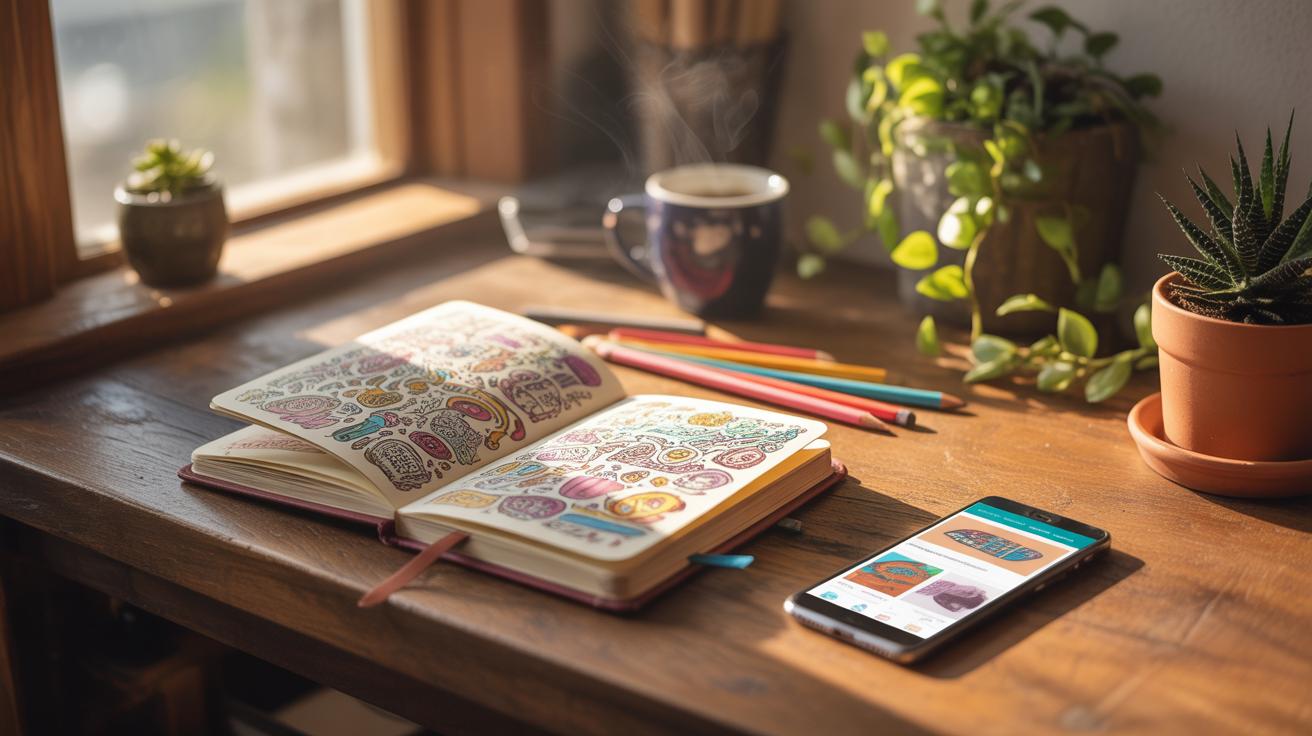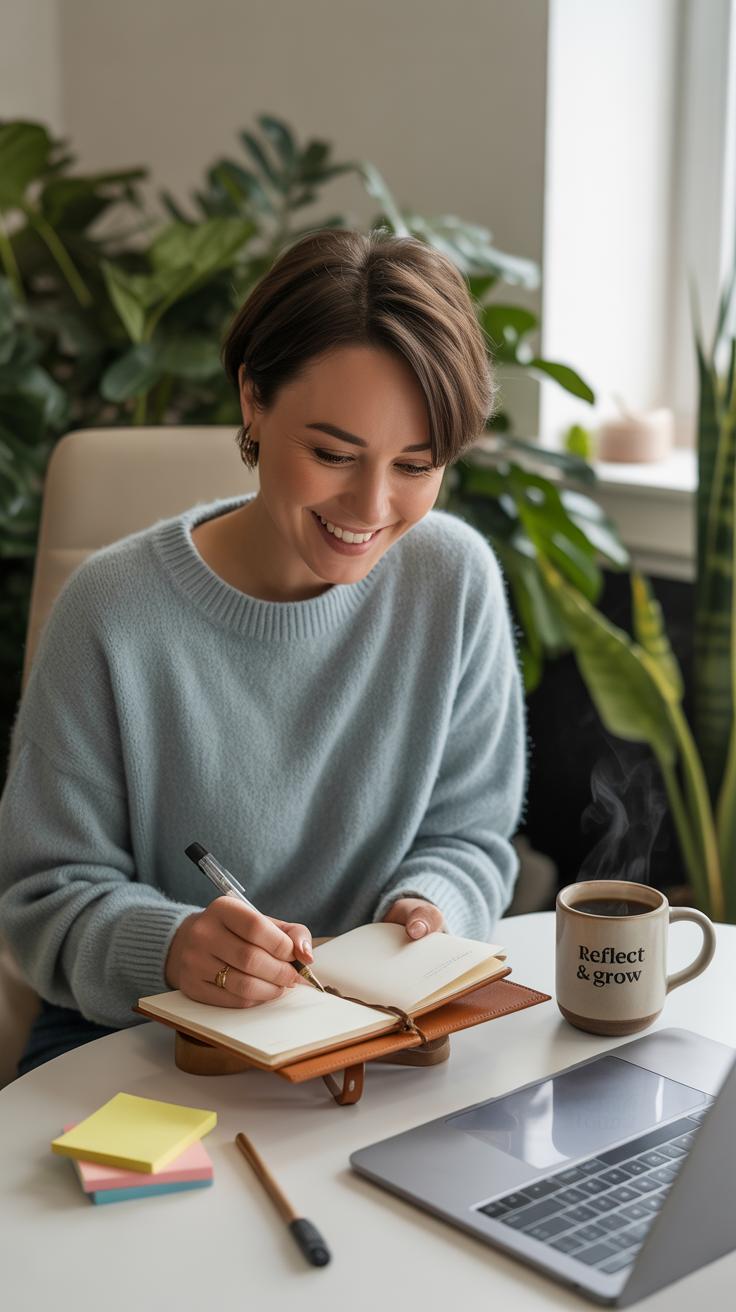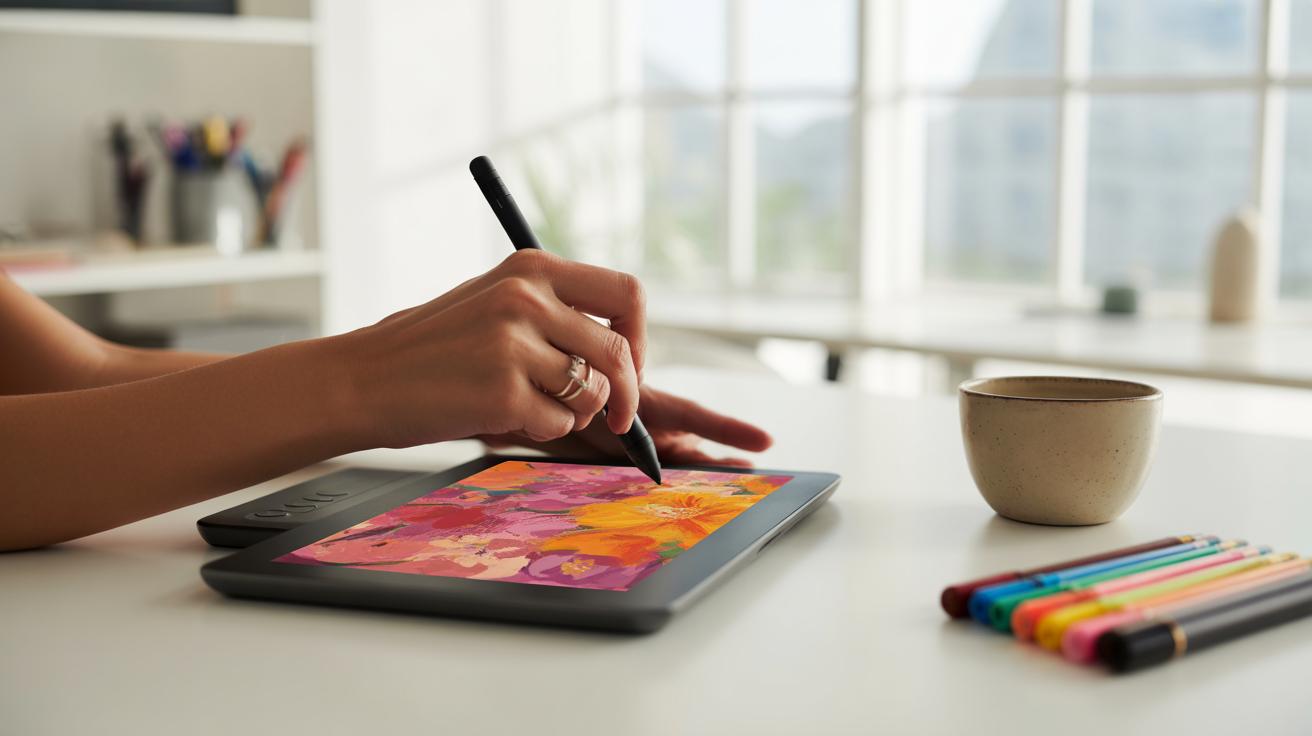
Pretty Journals Are Great For Expressing Your Thoughts Creatively
Introduction
Pretty journals offer a special way to express your thoughts and feelings. They turn simple writing into a fun and creative activity. Using colors, drawings, and decorations in your journal makes your thoughts come alive. This boosts your mood and inspires your creativity.
In this article, you will learn why pretty journals matter. We’ll explore how choosing the right style can make journaling more enjoyable. You will also find practical tips to start your own creative journaling journey. Pretty journals can help you understand yourself better and enjoy writing every day.
What Is A Pretty Journal
A pretty journal is more than just a notebook for writing down thoughts. It’s about the way it looks and feels, making the act of journaling a little more enjoyable and inviting. What sets a pretty journal apart from a standard one is its design and presentation. You might find colorful covers, whimsical patterns, or even covers made from fabric or leather with embossed details. Inside, pages aren’t just blank or lined; they include decorative headers, inspiring quotes, or subtle illustrations to spark your creativity.
For example, a pretty journal could have floral prints on every page or delicate gold foil accents. Some journals even come with matching pens or bookmarks to create a more unified experience. It’s like a regular journal, but with a touch of charm that makes you want to open it again and again. The difference? It feels personal, even special, like it’s meant to capture more than just words—it invites you to express yourself in a more artistic way.
Features Of Pretty Journals
Pretty journals tend to share some common features that really draw you in. Often, they sport colorful, sometimes textured covers that make them stand out from plain notebooks. You might notice:
- Creative layouts inside—think varied page designs, sections for doodling or lists, and decorative borders.
- Artistic elements like stickers, washi tape, or hand-drawn illustrations that encourage you to get creative.
- Pages with prompts or inspirational quotes that give your journaling a gentle nudge when you’re stuck.
- Bookmarks, ribbon markers, or even elastic bands to keep everything tidy and accessible.
These features make the journaling process feel like an experience, not just a task. I remember once buying a journal with delicate botanical prints on every page. It almost made me write more just because it felt good to look at. That’s the appeal.
Types Of Pretty Journals
Different kinds of pretty journals cater to various journaling styles and goals. You might find yourself drawn to one over another, depending on how you want to express yourself. Some popular types include:
- Bullet journals: These use dots instead of lines, giving you the freedom to create customized layouts. You can track habits, plan your week, and add artistic elements all in one place.
- Art journals: A canvas for visual expression. Here, words often take a backseat to drawings, collages, or mixed media pieces. It’s less about structure and more about exploration.
- Decorative diaries: Think traditional diaries but with colorful, embellished pages. They might include daily prompts, mood trackers, or spaces for photos and memorabilia.
Each type caters to different moods or needs. Sometimes you want order and productivity; other times, pure creativity. There’s no one right way—it’s about what fits you in the moment.
Why Use Pretty Journals
Using a pretty journal can make a surprising difference when you sit down to express your thoughts. There’s something about a journal that looks inviting—cover designs, textured paper, colors—that encourages you to actually open it more often. That little spark, that sense of pleasure from handling a beautiful notebook, can gently nudge your mind into creative spaces you might not reach with a plain, boring one.
Think about it this way: when your journal is visually appealing, it’s easier to feel excited about writing or sketching in it. This can boost your creativity because you’re more willing to experiment, jot down random ideas, or push past mental blocks. You might even find yourself doodling or adding little touches of your own, turning journaling into a small artistic ritual.
On the emotional side, pretty journals can offer a comforting routine. Opening a book that feels special can slow you down, help reduce stress, or even lift your mood on tough days. It’s not just about writing; it’s about creating a calm space for your feelings. Sometimes, the act of filling those pages helps untangle anxious thoughts or leaves you with a quiet sense of accomplishment.
So, why choose pretty journals? Because they invite you in, inspire fresh ideas, and quietly support your emotional well-being. Isn’t it curious how something simple, like picking the right notebook, can affect the mind in subtle but real ways?
Picking The Right Journal For You
Choosing a pretty journal isn’t just about picking what looks good on a shelf. It’s more personal than that, and you might realize your preferences change once you get deeper into writing. Start by thinking about your own style. What colors catch your eye? Maybe soft pastels calm you down, or bold hues energize your mood. Size matters, too—the heftier notebooks might feel inspiring, but they can be bulky. Smaller ones suit quick notes or carrying around, but can they hold all your thoughts?
Cover design plays a subtle role in how often you open your journal. A pattern that feels joyful or a texture you like touching can draw you in. But don’t get too stuck on perfection. Sometimes the plainer journals end up being the ones you treasure most.
Functionality should match your writing habits. Good paper quality can make a huge difference—thin pages might bleed your favorite pen ink, turning a creative moment into frustration. Binding affects how flat your journal stays open; loose bindings are easier for doodles and wide margins. As for page layouts, do you prefer lined, dot grids, or blank pages? Each serves a different style of recording your thoughts. Maybe experiment first to see what feels natural for you.
Think about your journaling goals, too. Are you sketching ideas, jotting daily reflections, or making lists? Each purpose might benefit from a different setup. Honestly, finding the right pretty journal can be a bit of trial and error. But once you find one that fits, it’s easier to keep up the practice and enjoy the process.
Setting Up Your Journal
Basic Setup
Starting your pretty journal feels like opening a fresh door—what comes next is up to you, really. Begin by dedicating the first few pages to some kind of organization. Most people find an index useful; it’s like a simple map of your journal, making things easier to find later on. You might want to leave a couple of blank pages just for this index, then update it as you go.
Next, setting up a calendar is common. Whether monthly, weekly, or even daily layouts, it depends on how you want to track time or events. It doesn’t have to be perfect; some doodles or color splashes can help highlight special dates. If calendars aren’t your thing, try jotting down goals instead. Short-term or long-term, seeing your aims written out can keep you motivated.
Some people mix all three: index, calendar, and goals. If that sounds too much to do at once, just choose the one that feels more natural for your current mood or needs. After all, this journal is yours.
Adding Decorations
Decorating your pages brings your journal to life. You might want to try simple color coding with pens or markers to draw attention to headers or important notes. Colored pencils offer a softer touch for shading or even quick sketches.
Drawings don’t need to be elaborate. A tiny flower in the corner, a border that looks like waves, or little icons next to your lists can work wonders. Stickers are another easy option—just stick and go. They can brighten up blank spaces or add whimsy without much effort.
If you feel cautious about decorating, start small. Perhaps add one element per page at first. Over time, you may find yourself experimenting more naturally, discovering what styles or colors resonate with your mood or thoughts that day. The key is to make the journal visually inviting so you actually want to open it again and again.
Easy Creative Techniques
Using colors in your pretty journal is more than just decoration. When you pick a certain color, you’re giving your thoughts an extra layer of meaning. Maybe red is for urgency or excitement. Or blue for calmness. Sometimes, I find that switching colors throughout a page helps me see different moods or ideas more clearly, even if it feels a bit random at first. Try using lighter shades for gentle feelings and sharper tones when something really stands out. Don’t worry if the colors overlap or don’t blend perfectly—it’s part of the process.
Incorporating quotes can add a spark of inspiration or deep reflection to your pages. Choose words that feel personal—maybe something from a book you like or a phrase someone once told you. You might write the quote in a bold script or decorate it with simple borders or doodles. Sometimes just underlining or highlighting a few words can make the quote pop and keep it alive on the page. You don’t need to overdo it; a small, meaningful note can carry more weight than a full-page decoration.
Here are a few simple ways to bring these ideas to life:
- Pick one color each day to represent your mood, and stick to it as you write.
- Use colored pencils or markers to draw small symbols next to important sentences.
- Write a quote on a sticky note and decorate around it with little shapes or patterns.
- Highlight keywords from the quote in different colors to emphasize what matters most to you.
Is there a color you naturally reach for when you want to express something difficult? Or a quote you turn to repeatedly? These easy methods might help you not just to write, but to feel your way through your journal pages.
Journaling Every Day
Writing in a pretty journal every day can gently nudge you into a habit that feels both rewarding and surprisingly grounding. When you open a journal that looks inviting—maybe it has a soft cover, elegant patterns, or colors you like—it makes you a bit more eager to sit down and write. It’s almost like the journal itself is encouraging you.
Even if you don’t feel inspired, having a lovely journal can make the act of writing easier to approach. You might find yourself scribbling for just a minute or two at first, but those moments add up. Over time, this daily ritual can help clear your mind and reduce stress, though you might not notice the change right away. Sometimes it feels like nothing is different, but a week later you realize you actually feel lighter.
Simple Prompts
Forcing yourself to write pages every day can be daunting, especially if you’re not sure what to say. Simple prompts act like a gentle push without pressure:
- What’s one good thing that happened today?
- Describe how you’re feeling right now in three words.
- What’s something you want to remember from today?
- Write down a question you have about yourself or your day.
These prompts don’t demand deep reflection or perfect sentences. They can be quick notes or doodles, whatever feels natural. Sometimes starting small is just enough to keep you going.
Tracking Progress
Using your pretty journal to track moods or achievements doesn’t have to be complicated. Visual tools like simple mood charts or checkboxes can provide a quick snapshot of how you’re doing over time. You might add a small icon—a smiley face, a star, or even a color—next to daily entries to represent different feelings or wins.
One person I know colors a little square in their journal every day to mark whether they exercised or meditated. It’s satisfying to see those colors spread out, even if some days are blank. It’s like a quiet diary of your journey, and tracking visually can motivate you without making journaling feel like a chore.
Sharing Your Journal
Sharing parts of your pretty journal with friends or groups can be an interesting way to show a side of yourself that words alone might miss. Those carefully decorated pages, doodles, or color choices often speak volumes about your mood or mindset. When you share, you invite others into your thought process, which can feel both vulnerable and rewarding. But, you might wonder—does sharing take away some of the intimacy of journaling? Or does it add a new layer of connection?
Some people find that sharing prompts deeper conversations, sparking ideas or even support they hadn’t expected. For example, I once shared a page filled with abstract drawings that ended up leading to a discussion about creativity in a group I hadn’t spoken much in before. On the other hand, not every page feels right to share, and that’s okay too. It’s not necessary to be all or nothing.
Digital Sharing
Sharing journal pages online is easier than ever, thanks to various platforms tailored for creatives and writers. You can post images of your pages on social media, creative forums, or even private group chats. Platforms like Instagram or Pinterest work well if you want to showcase pretty layouts and get feedback on aesthetic choices. Meanwhile, groups on apps like Discord or Facebook can offer a space for more personal discussions.
Some people use apps that allow you to share specific pages or sections, even keeping a digital record alongside a physical journal. Posting online can sometimes feel like exposing yourself, so a small step might be to share only what feels comfortable first. The feedback—or even just acknowledgement from others—can make journaling feel a little more connected.
Privacy Options
Keeping parts of your journal private is just as important as sharing. Your journal is, after all, your personal space. Many people choose to keep a lock on the physical book or keep sensitive entries in a separate section altogether. If you’re sharing digitally, apps often let you control who sees what. Private groups, password-protected files, or sending pages directly to trusted friends are ways to maintain privacy.
There’s no rule that says you have to share everything, or that sharing should be all or nothing. You might share your colorful mood trackers but keep your deep reflections hidden. This selective sharing respects both your privacy and the joys of community. Finding balance here might take some trial and error, but it’s worth it when you feel that your journal can be both your secret place and your bridge to others.
Common Challenges
Keeping a pretty journal going isn’t always easy. At times, you might find yourself staring at a blank page, not sure what to write or doodle next. Maintaining motivation can be tricky, especially when life gets busy or journaling feels like a chore rather than a creative outlet.
You can try these to stay motivated:
- Set small, manageable goals—like writing one sentence or adding a quick sketch each day.
- Allow yourself to skip days without guilt; sometimes a break refreshes your energy.
- Mix things up—try new colors, layouts, or themes to spark interest again.
Another common challenge comes from the pressure you might feel to make your journal look perfect. That urge to keep every page flawless can freeze your creativity. I know, it’s tempting to erase or start over, but remember, your journal is for you, not an art contest.
Try these ideas to ease that pressure:
- Focus on expressing your thoughts, rather than achieving visual perfection.
- Embrace mistakes as part of your journal’s personality—they tell stories too.
- Remind yourself that imperfection can be freeing and often leads to unexpected creativity.
So, when you hesitate, ask yourself: does it need to be perfect, or is it enough to be honest? Sometimes, letting go of perfection can open doors you didn’t even realize were there.
Growing With Your Journal
A pretty journal isn’t just a notebook wrapped in appealing covers; it becomes a part of your daily life, changing as you do. When you first start, you might fill pages with scattered thoughts or simple lists. Later, that same journal might hold deeper reflections, sketches, or plans you’ve been hesitant to share elsewhere. It’s odd how a blank book can quietly adapt alongside you without needing anything but your pen and time.
Revisiting your journaling goals is something I think many overlook. As your life shifts, so do your interests and needs. Maybe you began with the goal of venting frustrations, but now you want to explore creativity through poetry or doodles. Changing goals isn’t failing—it’s growth, plain and simple. Try asking yourself:
- What do I want to get out of journaling today that I didn’t before?
- Have my interests or challenges shifted?
- Would adding new formats, like lists, drawings, or collages, help express me better?
Looking back at old entries can feel strange at times, almost like reading someone else’s story or, at least, a younger version of yourself. You might smile at what once seemed important or notice patterns you barely caught. This reflection doesn’t have to be formal; even a quick flip through can remind you of how far you’ve come and what still matters. Sometimes, reflecting raises new questions or ideas you hadn’t thought about in a while.
Conclusions
Pretty journals help you keep your thoughts organized and colorful. They make writing more enjoyable and motivate you to write regularly. By choosing a journal that fits your style, you create a personal space for your ideas to grow. Creative journaling is a simple habit that brings many benefits to your mind and emotions.
Start your pretty journal today and see how it changes your way of thinking. Use the tips and ideas shared here to keep your journaling fun and meaningful. Express yourself clearly and watch your creativity expand. Your journal is your personal story waiting to be told.
